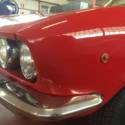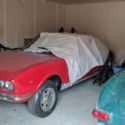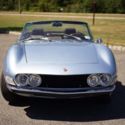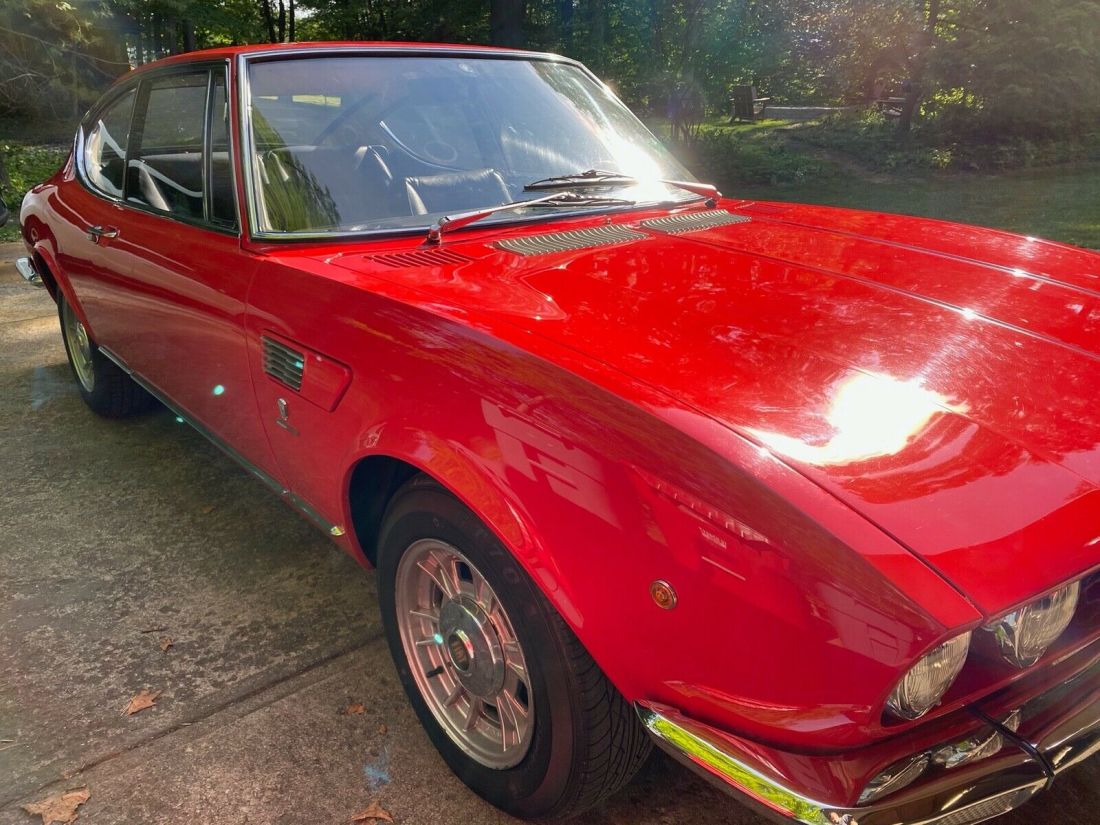1967 Fiat (Ferrari) Dino Coupe
- Location: Pickerington, Ohio, United States
- Make: Fiat
- Model: Ferrari Dino Coupe
- Type: Coupe
- Year: 1967
- Mileage: 64000
- VIN: 135AC0000651
- Color: Rosso Corso
- Engine size: 2.0L Ferrari V-6
- Number of cylinders: 6
- Power options: Power Windows
- Fuel: Gasoline
- Transmission: 5-speed manual
- Interior color: Black
- Drive side: Left-hand drive
- Options: Cassette Player, Leather Seats
- Vehicle Title: Clean
1967 Fiat Ferrari Dino Coupe Description
This Dino isn't perfect, but a beautiful example of the classic "baby Ferrari." Has won numerous awards at the Cincinnati/Ault Park Concours d'Elegance and other car shows. Service records available. Lovingly owned and cared for for the past six years. Additional photos available on request.
The Dino road cars came to be because ofEnzo Ferrari's need tohomologatea V6 engine forFormula 2racing cars. In 1965 theCommission Sportive Internationale de la FIAhad drawn up new rules, to be enacted for the 1967 season. F2 engines were required to have no more than six cylinders, and to be derived from a production engine, from a road car homologated in the GT class and produced in at least 500 examples within 12 months.[2][3][4]Since a small manufacturer like Ferrari was in the mid 60s did not possess the production capacity to reach such quotas, an agreement was signed withFiatand made public on 1 March 1965: Fiat would produce the 500 engines needed for the homologation, to be installed in a GT car which remained to be specified.[3][4]
Dino was the nickname of Enzo's sonAlfredo Ferrari, who had died in 1956 and was credited with the concept for Ferrari's Formula 2 V6 racing engine, believed to be designed byVittorio Janowith a peculiar 65° angle between thecylinder bank.[2]In his memory, V6-engined Ferrarisports prototyperacing cars had been named Dino since the late 1950s. The conversion of this racing engine for road use and series production was entrusted to the engineerAurelio Lampredi, who had previously designed several 4-cylinder Ferrari engines. Interviewed in the early 1980s, Lampredi noted that "things didn't work out exactly as Ferrari had foreseen": Enzo Ferrari had counted on building the engines atMaranello, but Fiat's management insisted on taking control of production, to avoid any breaks in the engine supply. The resulting Fiat-built V6 ended up being installed in two very different vehicles: the Fiat Dino, a front-engined grand tourer assembled in Turin by Fiat, and in Ferrari's first series-producedmid-enginedsports car, built in Maranello and sold under the newly createdDinomarque. Even on the cylinder block casting, the name FIAT was visible which was not in line with the newly created DINO make.
Fiat Dino, 1966–1969[edit]The Fiat Dino was introduced as a 2-seater Spider at theTurin Motor Showin October 1966;[5]a2+2Coupé version, built on a 270mm (10.6in) longerwheelbase, bowed a few months later at theGeneva Motor Showin March 1967.[6]The two bodies showed very different lines, as they had been designed and were manufactured for Fiat by two different coachbuilders: the Spider byPininfarina, and the Coupé byBertone—where it had been sketched out byGiorgetto Giugiaro. Curiously the Spider type approval identified it as a 2+1 seater.[2]The Spider had poorer interior trim than the Coupé, below par for its class: the dashboard was covered in vinyl, the metal-spoke steering wheel had a plastic rim, and the interior switchgear was derived from cheaper Fiat models.[4]After a few months this issue was addressed, and Spiders produced after February 1967 had a wood-rimmed steering wheel as well as a wood trim on the dashboard like the sister Coupé car had since the beginning.[4]Option lists for both models were limited to radio, metallic paint, leather upholstery, and for the Spider a vinyl-coveredhardtopwith roll-bar style stainless steel trim.
The car was offered with an all-aluminiumDOHC2.0L V6, coupled to a 5-speedmanual transmission. The same 2.0-litre engine was used in mid-engined, Ferrari-builtDino 206 GT, which was introduced in pre-production form at the 1967 Turin Motor Show and went on sale in 1968. Fiat quoted 160PS (118kW; 158hp) for the Fiat Dino, while in 1967 Ferrari—presenting the first prototype of the Dino 206 GT—claimed 180hp (130kW) despite both engines were made by Fiat workers in Turin on the same production line, without any discrimination as to their destination. Jean-Pierre Gabriel in "Les Ferraris de Turin" notes that, "La declaration de Ferrari ne reposait sur aucun fondament technique"—Ferrari's statement had no technical basis.[7]The real reason for this difference was a mistake in between quotes made in SAE and BHP power output.
 Super Rare 1967 fiat dino coupe w/Ferrari grille.
Super Rare 1967 fiat dino coupe w/Ferrari grille.
Mileage: 60000
 1967 Fiat Dino Coupe 2.0L V6 Ferrari Engine Matching Numbers Early Production#48
1967 Fiat Dino Coupe 2.0L V6 Ferrari Engine Matching Numbers Early Production#48
Mileage: 39026
 1967 Dino Ferrari Powered Fiat
1967 Dino Ferrari Powered Fiat
Mileage: 18,000
 1970 Fiat Dino 2400GT Bertone Coupe - Ferrari V6
1970 Fiat Dino 2400GT Bertone Coupe - Ferrari V6
Mileage: 17,072
 FIAT DINO COUPE - COLLECTOR ITEM. FERRARI, LAMBORGHINI, MASERATI, PORSCHE
FIAT DINO COUPE - COLLECTOR ITEM. FERRARI, LAMBORGHINI, MASERATI, PORSCHE
Mileage: 5,231
 1967 Fiat Other Dino Coupe
1967 Fiat Other Dino Coupe
Mileage: 40,379
 1968 Fiat Dino - Ferrari V6
1968 Fiat Dino - Ferrari V6
 1967 Fiat Dino 2+2 Coupe - Alloy 2.0L 4-Cam V6 - Beautifully Restored and Rare!!
1967 Fiat Dino 2+2 Coupe - Alloy 2.0L 4-Cam V6 - Beautifully Restored and Rare!!
Mileage: 9,959
 1967 FIAT DINO 2.0 LITER SPORTS COUPE. V-6 DOHC, TRIPLE WEBER CARBS, 5-SPEED
1967 FIAT DINO 2.0 LITER SPORTS COUPE. V-6 DOHC, TRIPLE WEBER CARBS, 5-SPEED
Mileage: 41,827
 1971 FIAT DINO SPIDER, BARE METAL RESTORATION, FERRARI, LAMBORGHINI, PORSCHE
1971 FIAT DINO SPIDER, BARE METAL RESTORATION, FERRARI, LAMBORGHINI, PORSCHE
Mileage: 400












